This summer, Wild Warner discovered that the Madison Mallards organization was blowing up fireworks outside its ballpark, into the woods and wetlands.
The group voted at its September 4 meeting to ask for an end to this practice. On Wednesday Sept. 12, Chair Jim Carrier read the following to the Parks Commission:
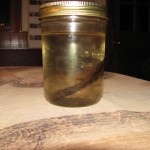
I want to update you on our efforts to measure the effect on fireworks in Warner Park. There’s progress, and a bit of a setback that I hope you will correct.
As you know the city appropriated $25,000, and Wild Warner raised $4,000 to test Rhythm & Booms chemicals in sediment, soil, water and plants. The last batch of plant samples went to the UW lab yesterday. It may be a couple of months before we understand the results.
I can show you this however: A piece of one of Rhythm & Booms 15,000 shells that I picked up the morning after while I was rowing the county health technician through the wetland.
Terry Kelly has always claimed the debris was biodegradable. Well, here it is, two-and-a-half months after, in the water it landed in. It sank below the surface, yes, but shows no sign of bio-degrading.
On the photos I’ve passed out, I call your attention to one showing the four sampling areas, including the inlet by the Tin Can shelter.

Quite by chance we discovered that this had become the new fallout zone for the Mallards’ four fireworks shows.
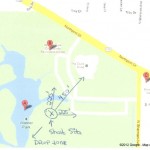
There are a number of problems here:
First, in February, when you approved the new centerfield berm and fireworks shows, there was no mention that they would now be shot into wetland and woodland, instead of center field.
I talked to Vern Stenman that night and said we had no objection, as long as the Mallards stayed within their footprint — a footprint that was the result of a long testy negotiation with the city. Vern, who we count as a good neighbor, admitted that the fireworks left considerable debris that his staff had to clean up in center field.
Parks emailed us on June 13, a Wednesday, that they were cutting several trees. When we went to check the next day, they were gone.
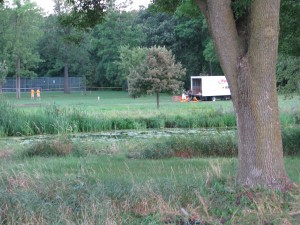
Three days later the fireworks were shot from where they had been, and a couple of acres around it were cordoned off. The Mallards footprint was now 20 percent bigger to allow fireworks.
Second, these fireworks landed — those photos show it — in an area that the city was testing with $25,000 taxpayer money, and $4,000 of ours.
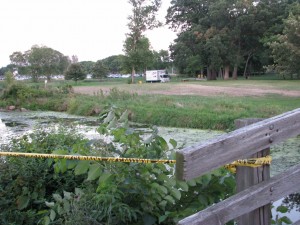
I personally gathered leaves and dug soil samples were the fireworks landed. Never mind that it was in a wetland – those four Mallard programs contaminated our test area.
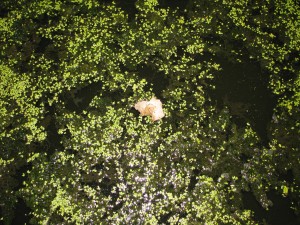
The fire department says this was chosen to prevent corrosive debris landing on parked cars.
Wild Warner does not object to fireworks per se. We want to stop the pollution. We’re trying to improve the wetland, but we can’t if the city continues policies that chip away at its already fragile and marginal health.
There’s one photo that shows a duck with her babies downwind before the last Mallards fireworks show
What happened this summer was that, to sell more tickets to Mallards fans, we rained corrosive fireworks on real mallards, their home and their babies.
Please do not let this happen again.
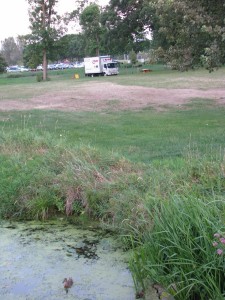
You must be logged in to post a comment.